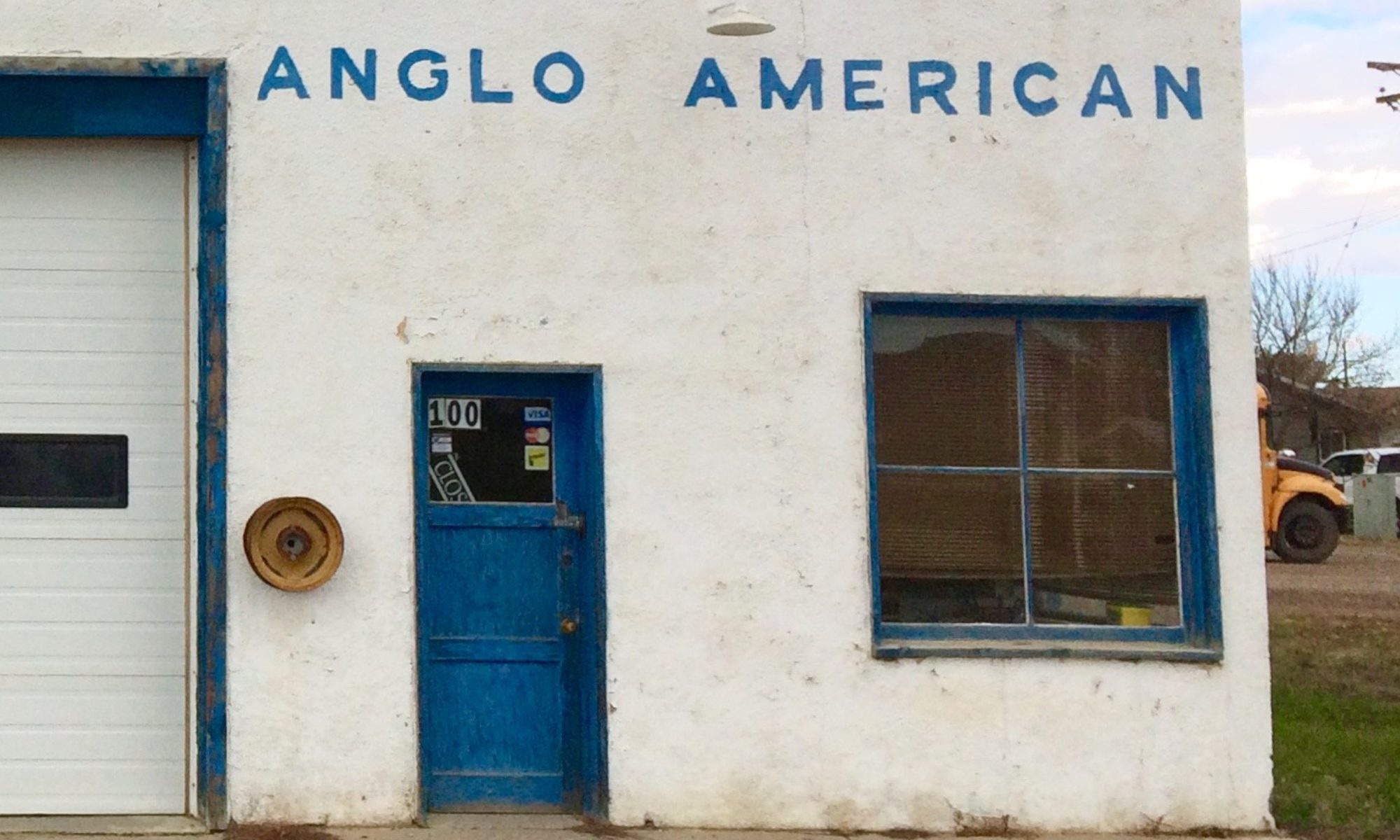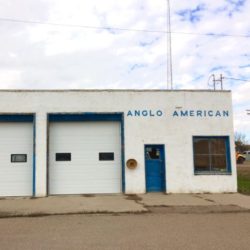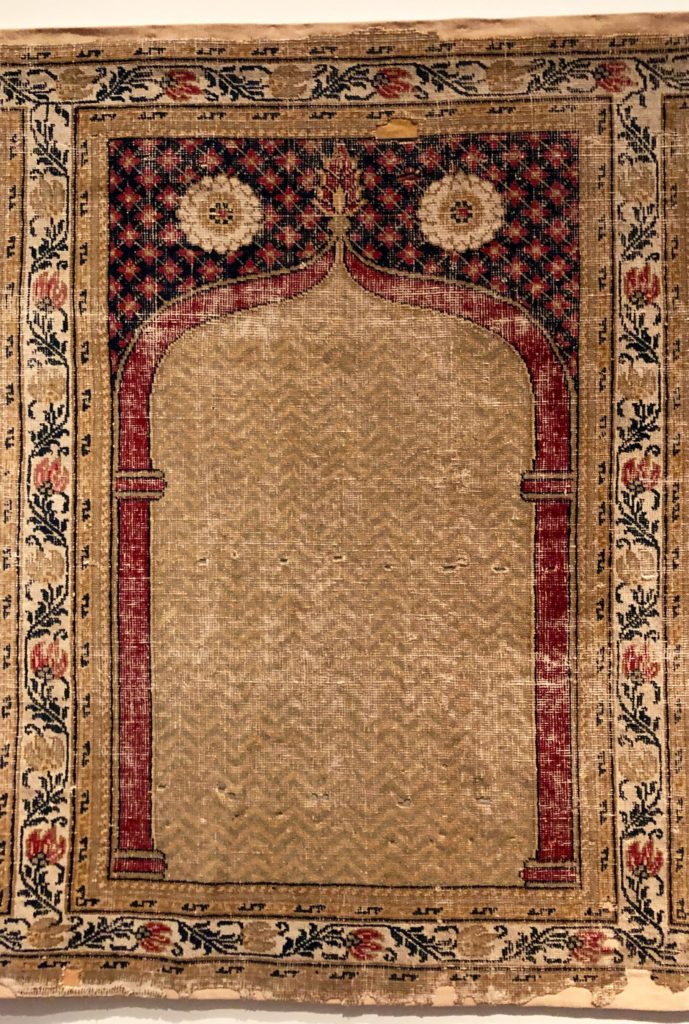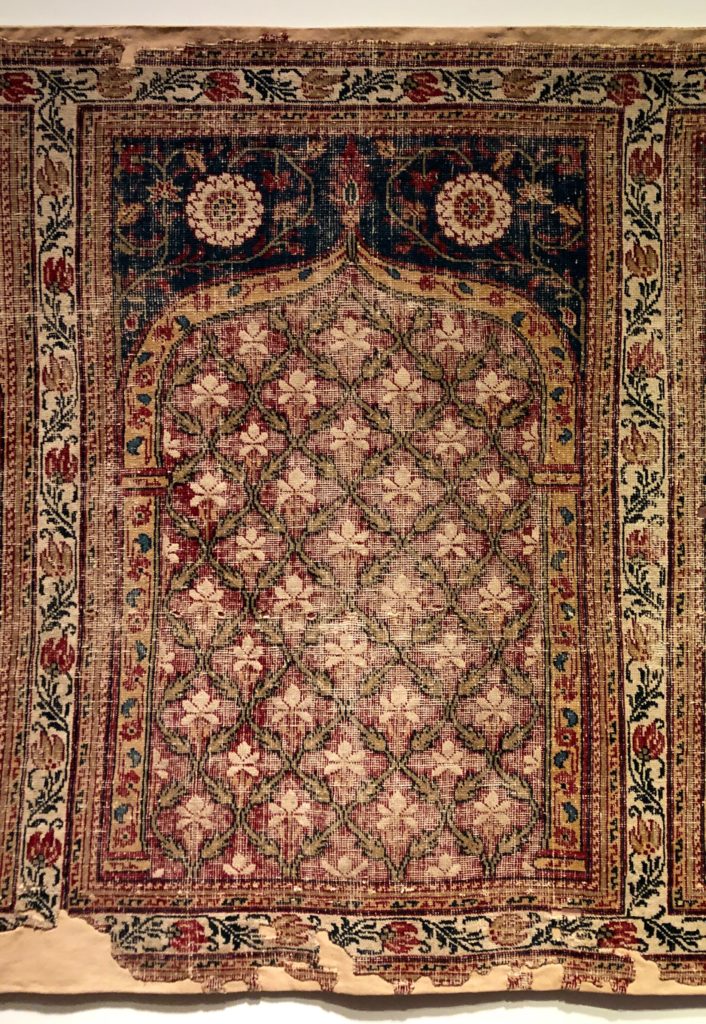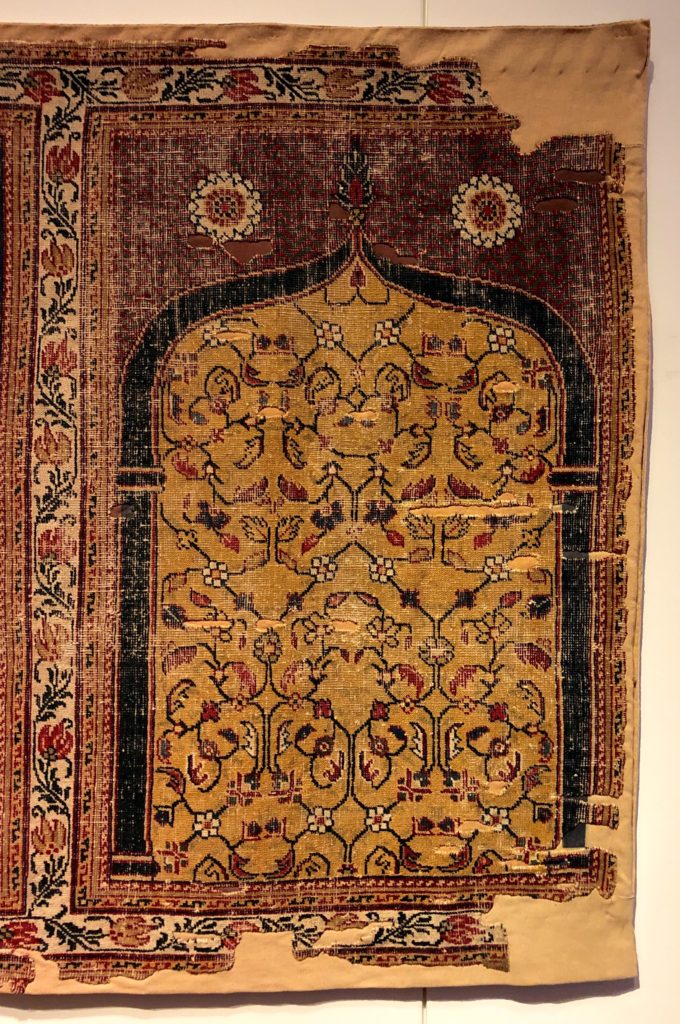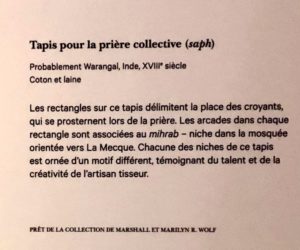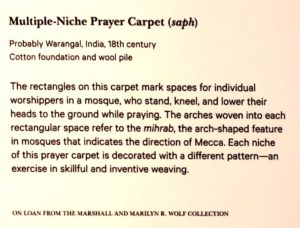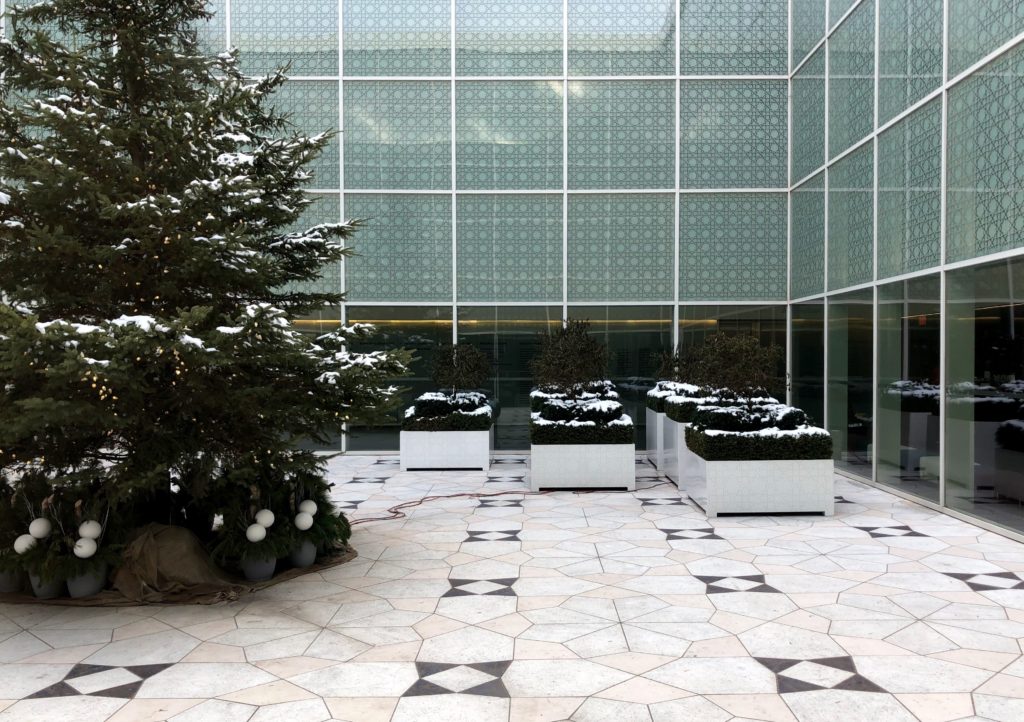At the museum, the lead curatorial description provided for the public is in Canada’s two official languages. They are not direct translations. In french Tapis pour la prière collective highlights a group spiritually inspired action. In English, the phrase, Multiple Niche Prayer Carpet, describes attributes of the physical object. Pointing out this difference is not a criticism, or to suggest that a different version might be more successful. Both texts aim to find some truth in explaining what is being presented, and are in some respects, complementary.
Below is an image of the Aga Khan Museum’s courtyard. The building, opened in 2014, was designed by Japanese architect Fumihiko Maki. Maki is a Pritzker Prize winner who has completed work internationally with projects in Germany, Switzerland, America, Korea and Singapore. The Aga Khan Foundation Canada engaged Maki for their headquarters in Ottawa. That project was completed in 2008.
